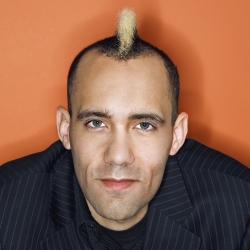 Diversity is a huge topic. Trying to get our heads around the idea that each of the 7 billion people is unique is just impossible. We may understand it at an abstract level, but not in a way that really helps us practically. To be useful we need to have some understanding of the different ways that people are different, in order to be effective at managing diversity.
Diversity is a huge topic. Trying to get our heads around the idea that each of the 7 billion people is unique is just impossible. We may understand it at an abstract level, but not in a way that really helps us practically. To be useful we need to have some understanding of the different ways that people are different, in order to be effective at managing diversity.
There are several frameworks available to us when it comes to understanding those differences. Here are a few that might be helpful:
- Developmental differences
- Cultural differences
- Religious differences
- Values differences
- Personality differences
- Representational systems
- Gender differences
This article is the first in a series looking at each of these frameworks in turn.
1. Developmental differences.
Life is a journey and we are each at different stages on that journey. The fact that someone has a world-view different to mine may be partly because they are either further ahead or further behind us on that journey. We may, in time, come to see things the same way they do. Or they may, in time, see things the way we do. The key here is time. The developmental process unfolds at its own pace. In the same way that you can’t place a six-year-old behind the steering wheel of a car after a few lessons and expect them to drive well, we can’t simply expect other people to arrive at our perspective just through imparting information.
There are several different models of development which can be useful to look at. All of them inter-relate with each other:
Freud talked about three main stages of psycho-sexual development in children:
- Oral (focus on issues of Trust and Dependency),
- Anal (focus on issues of Authority and Autonomy),
- Genital (focus on issues of Competition and Co-operation).
Jean Piaget identified four stages in the development of thinking processes:
- sensori-motor intelligence (typically from ages 0-2yrs, learning about the body and its interaction with the physical world)
- intuitive thinking (typically from ages 4-7; ability to think in images and symbols, inability to distinguish between their own perspective and the perspectives of others; magical thinking)
- concrete thinking (typically from age 7 into adolescence; development of logical thought, consciousness of the different perspectives of self and others, and interest in exploring the perspectives of self)
- abstract thinking (typically from adolescence into adulthood; ability to use symbols to handle abstract concepts)
Lawrence Kohlberg was interested in the development of moral thinking and attitudes as they inform an individual’s moral judgements. He outlined six stages of moral development with different bases for moral decisions, divided into three levels of judgement:
| Level | Stage | Basis for moral decisions |
|---|---|---|
| Pre-Conventional | 1 | Fear |
| 2 | Self-interest | |
| Conventional | 3 | Conformity |
| 4 | Social Order | |
| Self-accepted | 5 | Rights of others |
| 6 | Universal Principles |
In the early stages of moral thinking, we make our decisions out of fear of punishment. For example a child obeying their teacher because they don’t want to get a detention. Later, our decisions are based more on a desire to conform with the behaviour of the people around us so that we will be accepted into that social group. Only after we have gone through these stages do we get to a place of making moral decisions based on abstract concepts of the rights of others and the idea that there are principles which are always valid – even when nobody is watching us.
There are several more developmental models: James Fowler’s stages of faith, Erikson’s “Eight Stages of Man”, Jung’s four stages of life. Each can be useful in their own way.
A few observations about these various developmental models:
- There are similar patterns in all. For example, you can see in the examples above a parallel development between Kohlberg’s Pre-Conventional -> Conventional -> Self-accepted levels and Freud’s Oral -> Anal ->Genital stages.
- We don’t move through them all at the same speed. Typically, the development of our thinking processes (Piaget) happens quite fast and we may achieve fluency in abstract thinking in early adulthood. However, the development of moral thinking may be much slower and observation suggests that development in the area of religious/spiritual understanding may be the slowest of all.
- All the models move in the direction of universality, with final stages being marked by an openness to learning from the “other” – integration of alternative perspectives, stories and symbols.
The danger that comes with thinking about developmental models is falling into the trap of arrogance. We typically think that we are further down the developmental path than we actually are. And we tend to expect others to conform to the stage we think we are at, and judge them harshly when their behaviour differs from that.
The reality is that these stages are not so clear cut. To take Kohlberg’s model of moral thinking as an example, each adult moves between all six stages depending on the particular circumstances and state of mind they are in. In one context their decision-making may be primarily based on fear of punishment, and in another context it may be based on an appreciation of the rights of others. A business manager may have very high moral principles which they generally live by. But it would be foolish of that manager to think that their employees would be guided only by high principles without also having systems to ensure that employees know their behaviour is being observed and that unethical behaviour will be punished.
As with all the models for understanding diversity, the main thing is to recognize that we are different and to appreciate that this difference does not necessarily mean that the other person is bad or that we are bad because we are different. Managing diversity means creating a working environment that accommodates those differences in order to achieve the goals of the organization.
Mike Lowe
Helping individuals and teams get into flow





